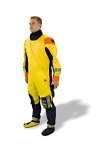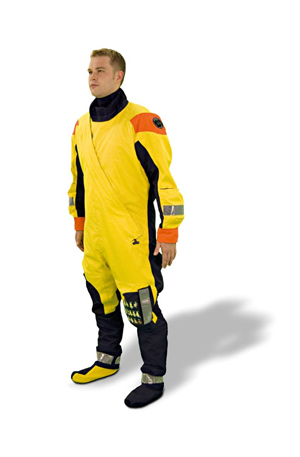A.Pecchi-300x192-cropped.jpg)
Porcher Industries to showcase carbon/PEEK helicopter rotor hub at JEC World 2017
Survival-One Limited, a leader in the design, manufacture and service of survival clothing and equipment, has recently launched a new helicopter passenger survival suit incorporating Outlast technology for better comfort. We all know that water can be dangerous with unpredictable element, but with some jobs and activities it is not possible to stay away from it. To get to offshore oil installations for example there is no other choice than to fly over water. So if a risk

8th April 2011
Innovation in Textiles
|
Aberdeen

Survival-One Limited, a leader in the design, manufacture and service of survival clothing and equipment, has recently launched a new helicopter passenger survival suit incorporating Outlast technology for better comfort.
We all know that water can be dangerous with unpredictable element, but with some jobs and activities it is not possible to stay away from it. To get to offshore oil installations for example there is no other choice than to fly over water. So if a risk can’t be avoided it is essential to take every precaution to minimize it.
“Survival-One manage a fleet of around 30,000 helicopter passenger survival suits for use by the offshore oil and gas industry”, explains Andy Wilson, Design & Development Manager at Survival-One Limited, Aberdeen/United Kingdom.
“We are experienced in providing survival solutions but we are always interested in innovation. We don’t want to look just for fulfilling specifications. We want to offer ultimate protection for workers without compromising human factors. Our latest development is the new 1000 Series suit which has now entered service, being worn over the North Sea. We are using Outlast® materials to enable offshore workers to benefit from enhanced insulation that regulates the microclimate inside the suit to improve thermal comfort and reduce thermal stress. The elevated thermal insulation worn to address the effects of long term immersion in water (typically less than 10°C) can cause heat stress to the wearer and utilizing Outlast® technology is one means of mitigating against this.”
“You can’t fight the sea, but by drawing on design knowledge, experience and the latest enabling technologies you can increase the effectiveness and efficiency of survival mechanism and protective equipment. We have achieved a real break-through with this next generation of survival suit. It delivers maximum protection without sacrificing comfort.”
The core business of Survival-One is concerned with the provision of helicopter survival suits, either for hire or outright purchase, to the offshore oil and gas industry. Such suits are worn by passengers and aircrew during helicopter transit to and from offshore oil and gas installations and are designed to provide protection against cold water immersion in the event of the helicopter ditching at the sea.
The need for helicopter passenger and aircrew immersion suits has developed with the growth of the offshore oil and gas industry. Offshore installation personnel are transported daily to and from offshore installations by helicopter. In the case of the UK northern sector of the North Sea, most flights are centred on Aberdeen Airport, Europe's largest commercial heliport, serving around 500,000 helicopter passengers each year.
In the past survival suits used in the UK sector of the North Sea used to confirm solely to the UK CAA Specification 19. According to Survival-One, the new suit doesn’t just comply with the new European standard of EASA (European Aviation Safety Agency), it goes beyond the minimum requirements delivering exceptional in-water performance and survivability. “ The people wearing it as they fly back and forth to their installations need to know that it is as technological perfect as it can be,” the company says.
“They want to feel that they have the best protection there is. But we also know what it is like to sit on a helicopter on a long flight with a survival suit: You have heat, noise, stress and all the rest of it… So we designed this new suit knowing that the people who wear it can feel confident that they are given the best possible protection whether it is been worn once or a hundred times. Our aim is to make their journey as comfortable as possible”, says Andy Wilson.
“We have even taken the latest offshore sizing information and carried out surveys of offshore workers, listening to their concerns and reacting to their feedback. These suits are built to fit today’s offshore work population.” The outer shell of the suit is waterproof, breathable and inherently flame retardant. The thermal lining uses state-of-the-art Outlast PCM technology for much better heat management.
Outlast technology was originally developed for NASA to protect astronauts from temperature fluctuations in space. In the Series 1000 suits it controls the microclimate inside the suit to absorb excess body heat from the wearer when it is hot. The Outlast lining stores that heat, then releases it when the wearer gets cold. Moreover there is also a bonded antimicrobial layer of 99.9% silver to make sure the material remains fresher for longer. And a 3mm thick layer which traps warm air and provides more insulation.

Business intelligence for the fibre, textiles and apparel industries: technologies, innovations, markets, investments, trade policy, sourcing, strategy...
Find out more